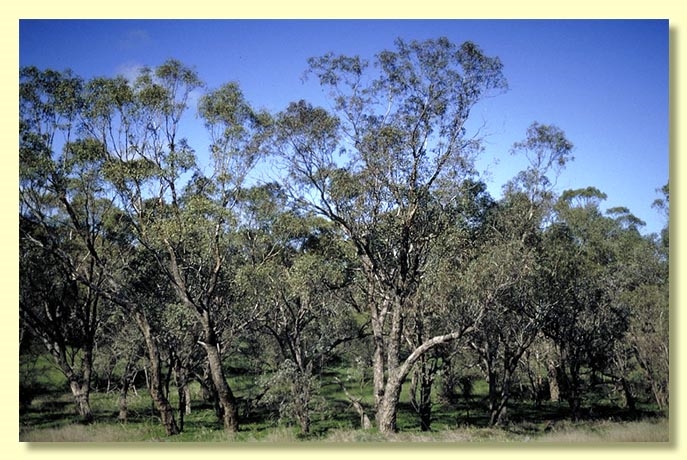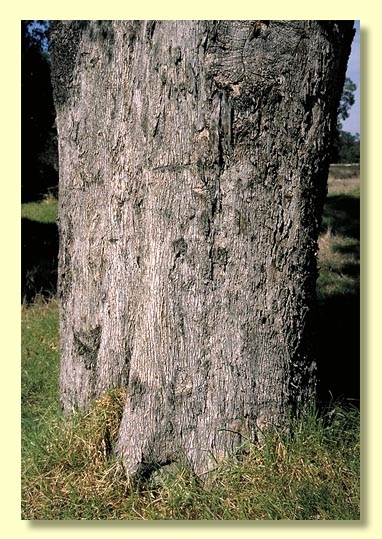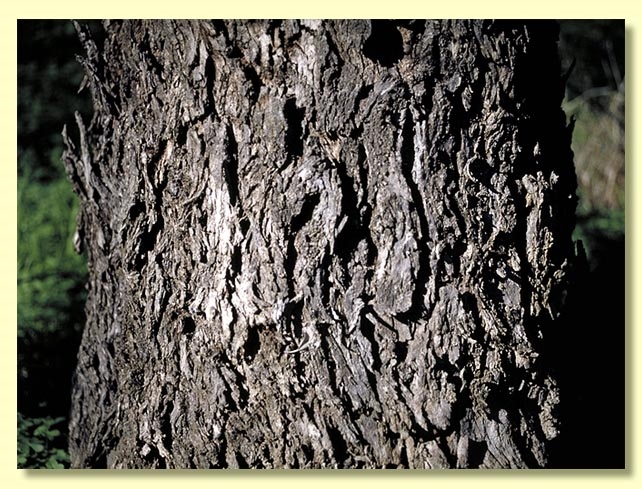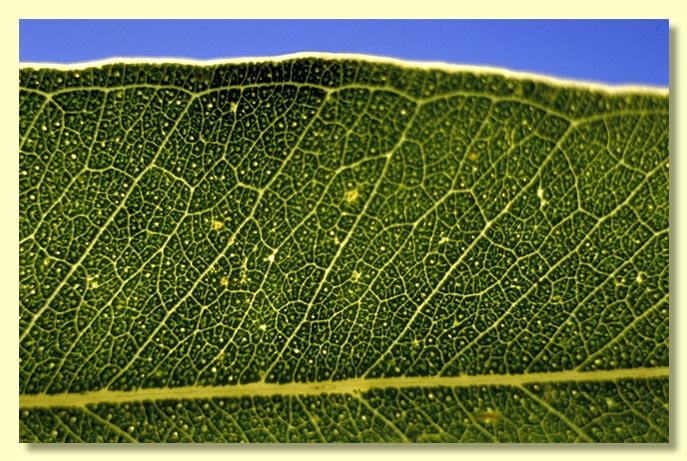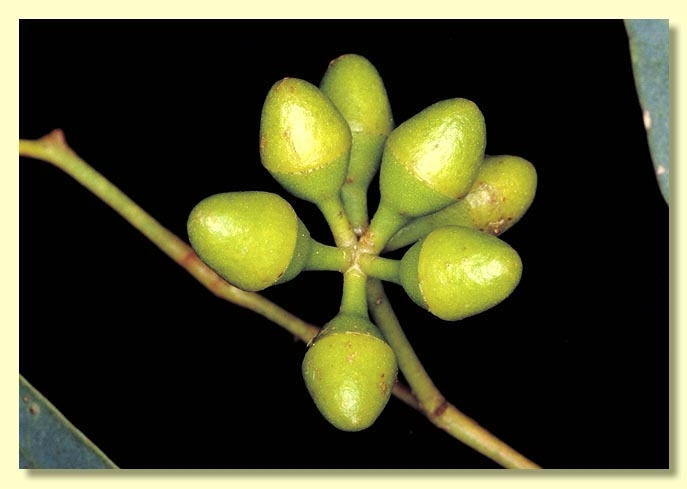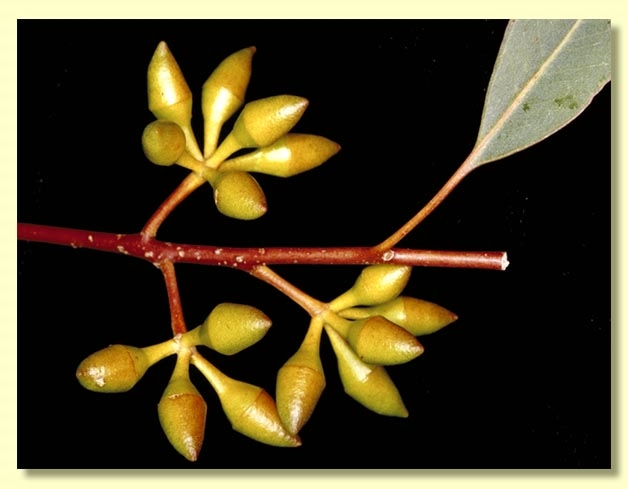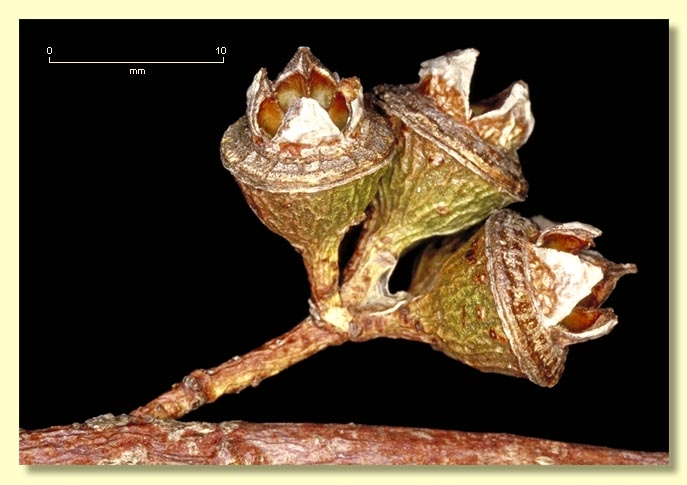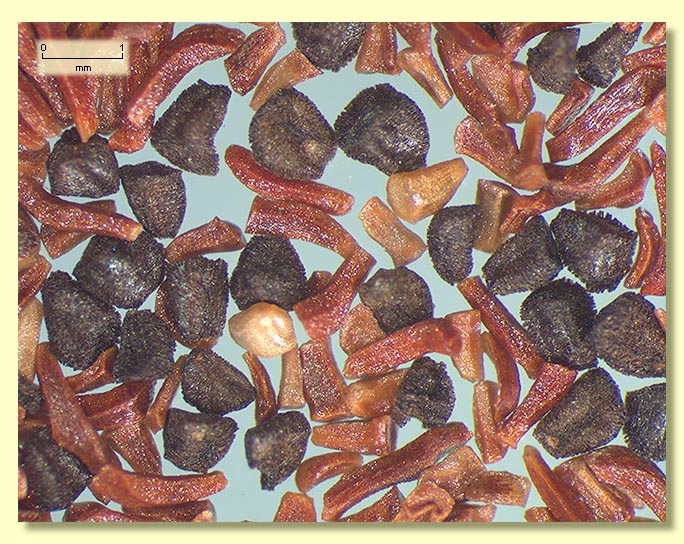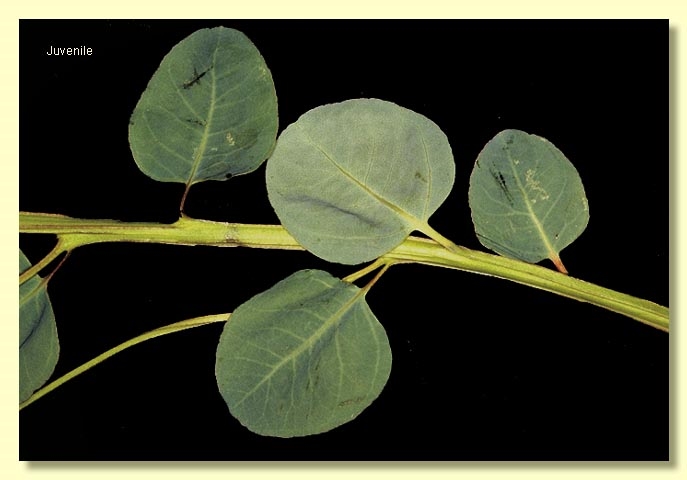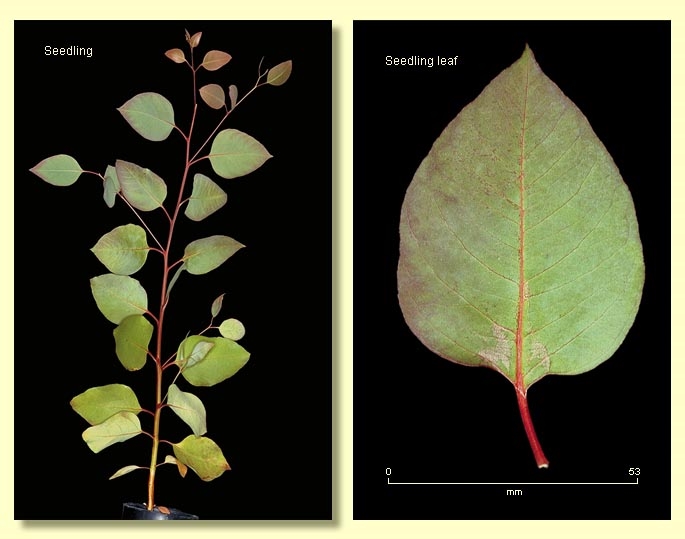Euclid - Online edition
Eucalyptus rudis subsp. rudis
Eucalyptus | Symphyomyrtus | Exsertaria | Singulares
T: King George Sound, W.A., 1833, C. von Hügel s.n.; holo: W.
Eucalyptus brachypoda Turcz., Bull. Soc. Imp. Naturalistes Moscou 22 (2): 21 (1849). T: Swan R. Colony, W.A. July 1847, J. Drummond 4; 73; iso: BM, CGE, K, LE, MEL.
Bark rough, fibrous, grey over part or all of trunks, becoming tessellated on older trunks, extending sometimes to branches to ca 10 cm diameter, rarely trunks entirely smooth, greyish white and dark grey.
Branchlets lacking oil glands in the pith.
Juvenile growth (coppice or field seedlings to 50 cm): stems square in cross-section, sometimes winged; juvenile leaves always petiolate, opposite for ca 5 nodes then alternate, ovate to deltoid or ± orbicular, 2.5–7 cm long, 2–6.5 cm wide, base more or less truncate to rounded or broadly tapering, apex usually pointed, rarely rounded, dull, greyish green, rarely slightly glaucous.
Adult leaves alternate, petioles 1.3–3 cm long; blade lanceolate to falcate, 7–18 cm long, 1–3.5 cm wide, base tapering to petiole, margin entire, apex pointed, dull to slightly glossy, green, side-veins greater than 45° to midrib, reticulation moderate to dense, intramarginal vein present, oil glands island.
Inflorescence axillary unbranched, peduncles 0.4–2 cm long, buds 7, 9 or 11, pedicellate (pedicels 0.1–0.8 cm long). Mature buds ovoid to diamond-shaped (0.8–1.2 cm long, 0.4–0.7 cm wide), scar present, operculum broadly to bluntly conical (0.4–0.8 cm long), some stamens erect but most inflexed, anthers oblong, versatile, dorsifixed, dehiscing by longitudinal slits, style long and straight, stigma blunt to rounded, locules 4 or 5, the placentae each with 6(8) vertical rows of ovules, sometimes with a small medial gap. Flowers white.
Fruit pedicellate (pedicels 0.2–0.4 cm long), campanulate to cupular or hemispherical, 0.4–0.7 cm long, 0.7–1 cm wide, disc raised, level or slightly descending, valves 4 or 5, prominently exserted.
Seeds 0.8–1.5 mm long, cuboid to pyramidal with a terminal hilum, mostly with a single blackish brown seed-coat, dorsal surface roughened but scarcely pitted and margin toothed; but often some straw-coloured double-coated smooth and glossy seed present (paler than the chaff particles but plump like the black seed).
Cultivated seedlings (measured at node 10): cotyledons oblong to slightly reniform; stems square and often winged in cross-section; leaves always petiolate, opposite for 3 to 5 nodes then alternate, deltoid to ovate, 6–9 cm long, 4.5–8.5 cm wide, base truncate to tapering, dull, green to grey-green
Flowering has been recorded in March, July, August, September, October and November.
Eucalyptus rudis is a species of small to medium-sized red gum tree endemic to Western Australia, occurring on the coastal plain north and south of Perth between Dongarra and Margaret River, the Darling Range and south-eastwards to the Pallinup River, always on stream banks or floodplains, on silty soils with clay subsoil. The bark is rough in most trees but occasionally it is smooth. The adult leaves are slightly glossy, green.
In its area of natural occurrence it should not be confused with other species and with its rough bark may be anticipated along streams and in swampy areas. To the north and north-east of its natural distribution, E. rudis grades into E. camaldulensis , which is distinctive with its smaller opercula and double-coated yellow seeds. Intermediates between both these species occur. This usually can be seen by inspecting the seed—if a high proportion of yellow smooth double-coated seed is present on a specimen then it is likely to be and intermediate between these two species. Such intermediates are known in the Northam area and further north near Three Springs. The southernmost occurrence of E. camaldulensis is near Moora.
There are two subspecies:
E. rudis subsp. rudis
The widespread form, extending from Pallinup River north to Dongarra. Subsp. rudis has buds 0.8–1.2 cm long, fruit 0.7–1 cm wide and four or five valves.
E. rudis subsp. cratyantha
Differs from subsp. rudis in having slightly larger parts. Buds 1–1.5 cm long, fruit 1.1–1.4 cm wide and more pronouncedly campanulate in shape, valves (4)5 or 6. It occurs only from Mandurah and Pinjarra south and south-west to Cape Naturaliste.
MORE ABOUT RED GUMS AND OTHER ASSOCIATED GROUPS

